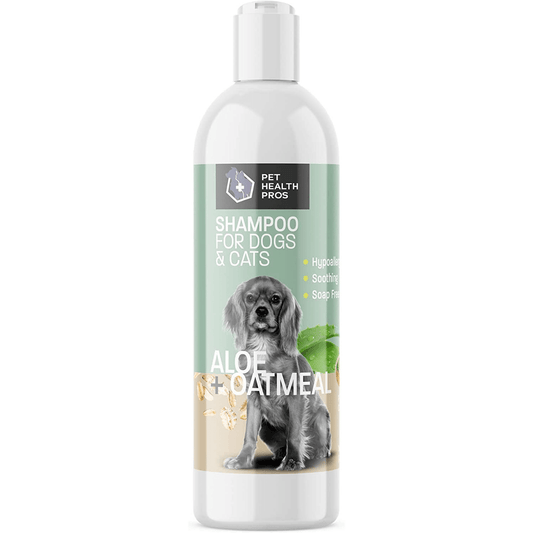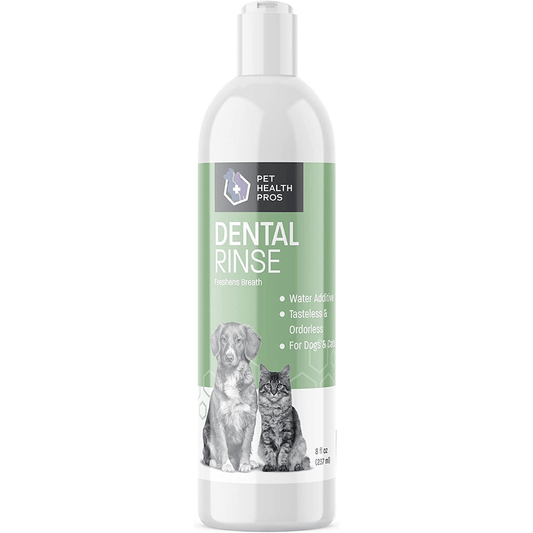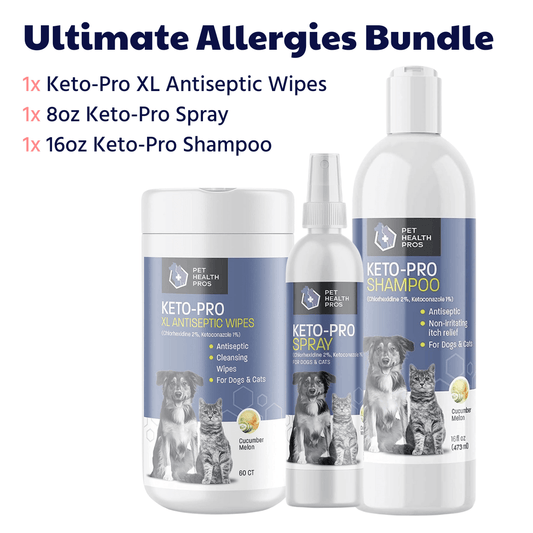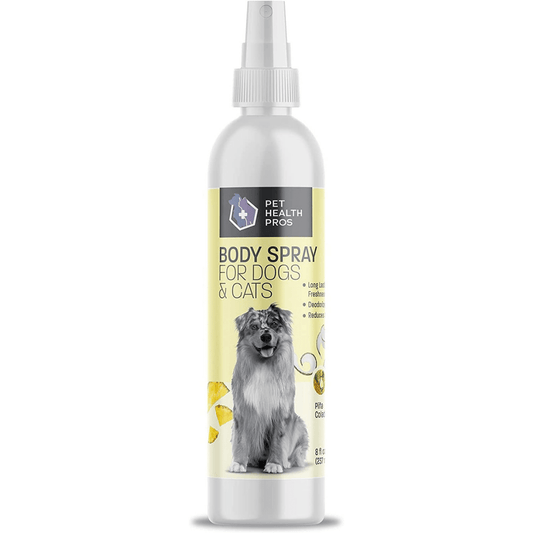Yeast infections in a dog's ears can be uncomfortable and concerning for pet owners. Understanding the symptoms, causes, and treatments for these infections is crucial for maintaining your dog's ear health. In this article, we will explore how to recognize, diagnose, and treat yeast infections in your dog's ears, as well as preventive measures and care tips to ensure your furry friend's well-being.
Key Takeaways
- Recognizing the symptoms of yeast infections in a dog's ears is essential for early intervention and treatment.
- Causes of yeast infections in dog's ears can include moisture, allergies, and underlying health conditions.
- Preventive measures such as regular ear cleaning and monitoring can help reduce the risk of yeast infections in your dog's ears.
- Veterinary diagnosis methods, including ear swabs and microscopy, are effective in diagnosing yeast infections.
- Effective treatments for yeast infections in dog's ears may include antifungal medications prescribed by a veterinarian.
Understanding Yeast Infections in Dog's Ears
Recognizing Symptoms of Yeast Infections
Yeast infections in a dog's ears can be uncomfortable and are a common health issue. Recognizing the early signs is crucial for prompt treatment and relief. Symptoms often include:
- Persistent scratching or rubbing of the ears
- Redness and swelling inside the ear
- A noticeable discharge that may have a foul odor
- Scaly, crusty skin around the ear
- Head shaking or tilting
If your dog exhibits any of these symptoms, it's important to consult with a veterinarian. While ear infections are common, they can sometimes indicate more serious health problems.
Early detection and treatment of yeast infections can prevent more severe complications and ensure your dog's comfort and health.
Remember, not all ear problems are due to yeast infections, so a proper veterinary diagnosis is essential. Following up with medications and exams as prescribed by your vet can lead to a successful recovery.
Causes of Yeast Infections in Dog's Ears
Yeast infections in a dog's ears are often the result of an imbalance in the natural flora of the ear canal. Moisture is a key factor in the development of yeast infections, as it creates an ideal environment for yeast to grow. Factors such as allergies, hormonal imbalances, or a weakened immune system can also contribute to the overgrowth of yeast.
Ear mites, foreign bodies, or excessive ear wax can lead to inflammation and create conditions ripe for yeast proliferation. Additionally, certain breeds with floppy ears or dogs that swim frequently may be more susceptible to developing yeast infections due to the retention of moisture in the ear canal.
It's important to understand that while yeast is naturally present on dog ears and skin, an overgrowth can lead to a fungal ear infection, often accompanied by a strange odor and other symptoms.
Understanding the underlying causes of yeast infections is crucial for effective prevention and treatment. Here are some common factors:
- Excessive moisture in the ear canal
- Allergies leading to ear inflammation
- Hormonal imbalances affecting skin and ear health
- Compromised immune system
- Presence of ear mites or foreign bodies
- Breed predisposition due to ear shape
Preventive Measures for Yeast Infections
Preventing yeast infections in your dog's ears is crucial for their comfort and health. Maintaining a dry and clean ear environment is essential, as yeast thrives in moist conditions. Regular ear checks and cleaning with a vet-approved solution can help prevent the buildup of wax and debris, which can lead to infections.
Proper diet plays a significant role in preventing yeast infections. A balanced diet with the right nutrients supports a healthy immune system, which is vital in fighting off infections. Additionally, certain supplements may help maintain ear health.
It's important to be cautious with over-cleaning, as it can irritate the ear canal and contribute to infections.
Lastly, be mindful of your dog's activities. Dogs that swim frequently or have floppy ears may require more diligent ear care to prevent moisture from becoming a breeding ground for yeast.
Diagnosing and Treating Yeast Infections
Veterinary Diagnosis Methods
When suspecting a yeast infection in your dog's ears, a visit to the veterinarian is crucial for an accurate diagnosis. Veterinarians employ a variety of diagnostic methods to confirm the presence of a yeast infection. A common approach is the use of an otoscope to visually inspect the ear canal and eardrum. If an infection is present, the vet may notice inflammation, discharge, or a foul odor.
Microscopic examination of ear discharge is another pivotal diagnostic tool. Vets often take a sample of the ear discharge and examine it under a microscope to identify yeast cells. This method provides definitive evidence of a yeast infection.
Early and accurate diagnosis is essential for effective treatment and can prevent the infection from worsening or causing more serious complications.
The following list outlines the typical steps a veterinarian might take during the diagnosis:
- Visual inspection with an otoscope
- Microscopic examination of ear discharge
- Possible culture tests to identify the specific type of yeast
- Assessment of the dog's medical history and symptoms
- Physical examination to rule out other conditions
After diagnosis, the veterinarian will discuss the most appropriate treatment options tailored to your dog's specific needs.
Effective Treatments for Yeast Infections
Once a yeast infection in your dog's ears has been diagnosed, your veterinarian will recommend an effective treatment plan. Topical antifungal medications are commonly prescribed to directly combat the yeast. These may come in the form of drops, ointments, or creams that are applied to the inside of the ear. In more severe cases, oral antifungal medications may be necessary to fully eradicate the infection.
Antibacterial and antifungal solutions, such as those offered by Pet Health Pros, can be an integral part of the treatment regimen. These products are often made with high-quality ingredients and are backed by the expertise of veterinary professionals. For example, a product like Banixx can be a reliable choice for at-home care, providing a quick and effective solution for your dog's discomfort.
It's essential to follow the treatment plan as prescribed by your veterinarian and to complete the full course of medication, even if symptoms appear to improve, to prevent recurrence.
Maintaining regular communication with your vet during treatment is crucial for monitoring your dog's progress and making any necessary adjustments. Additionally, keeping the ears clean and dry can aid in the healing process and prevent future infections.
Home Remedies and Care Tips
While veterinary care is paramount for treating yeast infections in dogs' ears, certain home remedies can support your pet's recovery and comfort. Maintaining a clean and dry ear environment is essential to prevent the growth of yeast. After consulting with your vet, you may consider gently cleaning your dog's ears with a solution recommended by them. It's important to avoid inserting anything deep into the ear canal to prevent damage.
Apple cider vinegar is a popular home remedy due to its antifungal properties. However, it should be diluted appropriately and used only if the dog's eardrums are intact. A simple mixture can be made by combining equal parts of vinegar and water. Use a cotton ball to apply the solution to the outer ear, being careful not to let it enter the ear canal.
Remember, home remedies are not a substitute for professional medical advice. Always consult your veterinarian before trying any new treatment.
For dogs prone to yeast infections, dietary adjustments may help. Incorporating foods with natural antifungal properties, like coconut oil, can be beneficial. Probiotics are also recommended to maintain a healthy balance of bacteria in your dog's system. Below is a list of care tips that can aid in the management of yeast infections:
- Keep ears clean and dry
- Use vet-recommended ear cleaning solutions
- Dilute apple cider vinegar for topical use
- Add antifungal foods to your dog's diet
- Include probiotics to support gut health
Early intervention is crucial for successful treatment and recovery, so be vigilant for common signs of illness in dogs, such as vomiting, diarrhea, coughing, and wheezing.
Maintaining Ear Health in Dogs
Regular Ear Cleaning Practices
Maintaining the cleanliness of your dog's ears is crucial for preventing yeast infections. Regular ear cleaning can help remove debris and wax, which are common breeding grounds for yeast. It's important to use a gentle, dog-specific ear cleaner and to follow the instructions carefully. Over-cleaning can also lead to irritation, so finding a balance is key.
Frequency and technique of ear cleaning may vary depending on your dog's breed, activity level, and ear shape. Here's a simple guide to help you establish a routine:
- Inspect your dog's ears regularly for signs of dirt, wax buildup, or inflammation.
- Gently wipe the outer ear with a soft cloth or a cotton ball dampened with a vet-approved ear cleaner.
- Avoid inserting anything deep into the ear canal to prevent damage.
- Dry the ears thoroughly after cleaning, especially if your dog has been swimming.
Remember, if you notice any redness, swelling, or an unpleasant odor during routine cleanings, it's time to consult your veterinarian. These could be signs of an infection or other ear problems.
By incorporating these practices into your dog's grooming routine, you can help ensure their ears remain healthy and free of infections. Always consult with your vet before starting any new ear care regimen, especially if your dog has a history of ear problems.
Nutritional Considerations for Ear Health
The role of nutrition in maintaining your dog's ear health cannot be overstated. A balanced diet rich in essential nutrients can help support the immune system, reducing the risk of yeast infections. Certain vitamins and minerals are particularly important for ear health, including Vitamin A, Vitamin E, and Omega-3 fatty acids.
Omega-3 fatty acids are known for their anti-inflammatory properties, which can help to prevent the conditions that allow yeast to thrive. Incorporating foods with high levels of Omega-3s, such as fish oil supplements, can be beneficial. Additionally, probiotics can promote a healthy balance of bacteria in your dog's body, potentially preventing harmful yeast overgrowth.
It's essential to consider the individual needs of your dog when selecting a diet. Factors such as age, breed, and health status can influence the specific nutritional requirements for optimal ear health.
Avoiding foods that are high in sugars and carbohydrates is also advisable, as these can fuel yeast growth. Instead, focus on a diet that includes lean proteins, healthy fats, and complex carbohydrates from vegetables and whole grains.
Monitoring and Preventing Recurrence
To ensure the long-term health of your dog's ears and prevent the recurrence of yeast infections, consistent monitoring and preventive care are essential. Regularly inspect your dog's ears for signs of redness, discharge, or an unusual odor, which could indicate the beginning of an infection. It's crucial to address these signs promptly by consulting your veterinarian.
Preventive measures include maintaining a routine of ear cleaning with vet-approved solutions. After cleaning, always dry your dog's ears thoroughly to create an environment less conducive to yeast growth. Here's a simple guide to follow:
- Inspect your dog's ears weekly
- Clean the ears using recommended techniques
- Dry the ears completely after exposure to water
- Schedule regular check-ups with your vet
By adhering to these practices, you can significantly reduce the risk of yeast infections and ensure your dog maintains optimal ear health.
Remember, a proactive approach to ear care can save your pet from discomfort and prevent more serious complications. If you notice any recurring issues, don't hesitate to seek professional advice.
Ensuring your furry friend's ears are healthy is crucial for their overall well-being. At Pet Health Pros, we offer a range of products specifically designed to maintain ear health in dogs, from advanced soothing ear wipes to professional ear cleaners. Don't wait for signs of discomfort or infection; be proactive in your dog's ear care. Visit our website today to explore our otic care solutions and take the first step towards your pet's ear health.
Conclusion
In conclusion, yeast infections in your dog's ears can be a common and uncomfortable issue that requires prompt attention and proper treatment. By recognizing the symptoms early on and seeking guidance from a veterinarian, you can effectively combat and manage these infections. Remember to follow the recommended treatments and preventive measures to ensure the health and well-being of your furry companion. Stay informed, stay proactive, and prioritize your dog's ear health for a happier and healthier life together.
Frequently Asked Questions
What are the common symptoms of yeast infections in a dog's ears?
Common symptoms include itching, redness, odor, and discharge in the ears.
Can yeast infections in a dog's ears be caused by allergies?
Yes, allergies can contribute to yeast infections in a dog's ears.
How can I prevent yeast infections in my dog's ears?
Regular ear cleaning, maintaining proper hygiene, and addressing underlying health issues can help prevent yeast infections.
How are yeast infections in dog's ears diagnosed by veterinarians?
Veterinarians may perform ear examinations, microscopic evaluations of ear discharge, and possibly culture tests to diagnose yeast infections.
What are some effective treatments for yeast infections in dog's ears?
Treatment may involve antifungal medications, ear cleansers, and in severe cases, oral medications prescribed by a veterinarian.
Are there any home remedies or care tips for managing yeast infections in a dog's ears?
Some home remedies include using diluted vinegar or coconut oil for ear cleaning, but it's important to consult a veterinarian before trying any home remedies.









